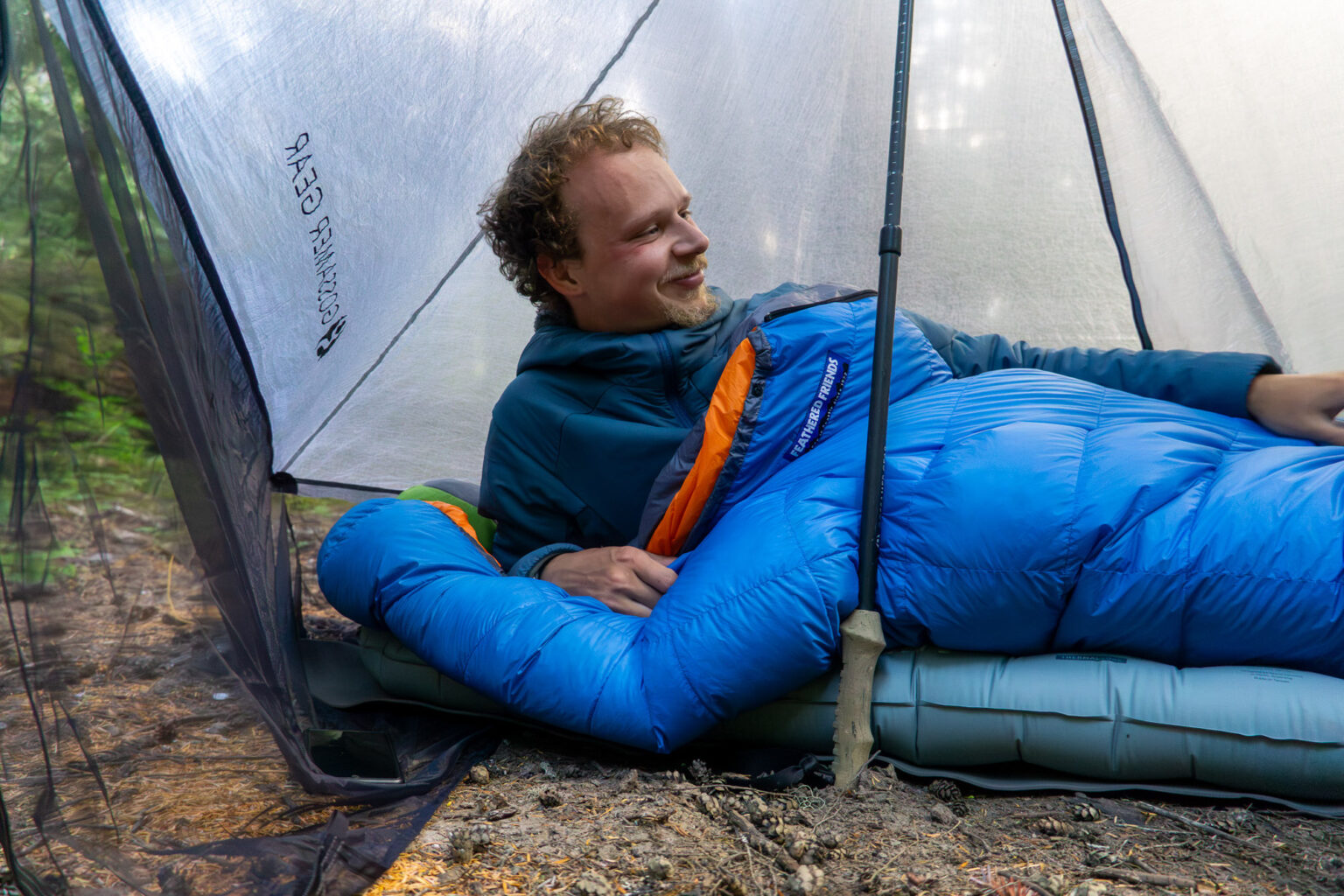All of the trip reports I was reading told me I was foolish for bringing a down sleeping bag to Gates of the Arctic National Park. The entire park is a bog — good luck. Not to mention our intention to paddle down two rivers during the trip, packing away all of our insulation inside our boats for the ride. If I were a betting man, I’d have bet on my soggy demise, too.
But hedge your bets, and you get away with it every once in a while. I stacked the deck in my favor this July by bringing the Feathered Friends Swallow UL 20 Sleeping Bag with me to Alaska, and while I won’t leave out praise for a good pack liner, a premium sleeping sack like this can make the difference.
The bag is about as real-deal as it gets, and if you’re deciding between big-name premium sleeping bag brands for a buy-once, cry-once option, it’s tough to do better than this. Here’s my take on this bag after a summer of use — above and below the Arctic Circle.
In short: The Feathered Friends Swallow UL 20 Sleeping Bag is a refined option that leans on a few solid pillars to achieve top-notch performance: high-quality Pertex fabrics, a beefy zipper and snaps, and above all else, the best goose down the brand can get its hands on. Looking for the buy-once, sleep-sound option? Consider this bag.
Looking for a new backcountry sleeping bag? Check out how the Swallow UL 20 compares to the rest of our tested favorites in GearJunkie’s Best Backpacking Sleeping Bags Buyer’s Guide.
-
Lofty and warm bag, even down to temperature rating -
Breathable outer shell that’s also tough -
Very high 950+ down-fill rating -
Snag-free zipper design
-
Pricey -
High loft can make stuffing difficult
Feathered Friends Swallow UL 20 Sleeping Bag: Review
Editor’s Note: Feathered Friends has recently rolled out a new version of the Swallow UL, which pivots to a Pertex Quantum Pro (read: a quieter option) shell fabric, and adds Pertex Diamond Fuse in the footbox. Both of these updates only reinforce our opinion of this high-quality bag.
To be fair, it was clear and sunny when the bush plane stamped the throttle and shrank away into the southern skyline. That night, however, as we made camp in about the tightest spot feasible in our tarp, the temperament of Alaska soured, and it sent down a soaking midnight rain.
My two buddies and I leaned into the wet for the next 5 days as summer squalls welled up over the Brooks Range. Throughout it all, however, the Swallow UL was a dry and warm place to park it every night.
I also slept in the Feathered Friends bag most nights I was outside this summer in the West, in shelters as simple as a single-wall tarp to full four-season tents with solid-wall inners. Through it all, it performed at a high level. The bag is available in a 30-degree version as well, and is the middle-width version of the brand’s do-it-all cut (with the Hummingbird UL being more narrow, and the Swift UL being wider).
Undeniable Warmth When You Need It
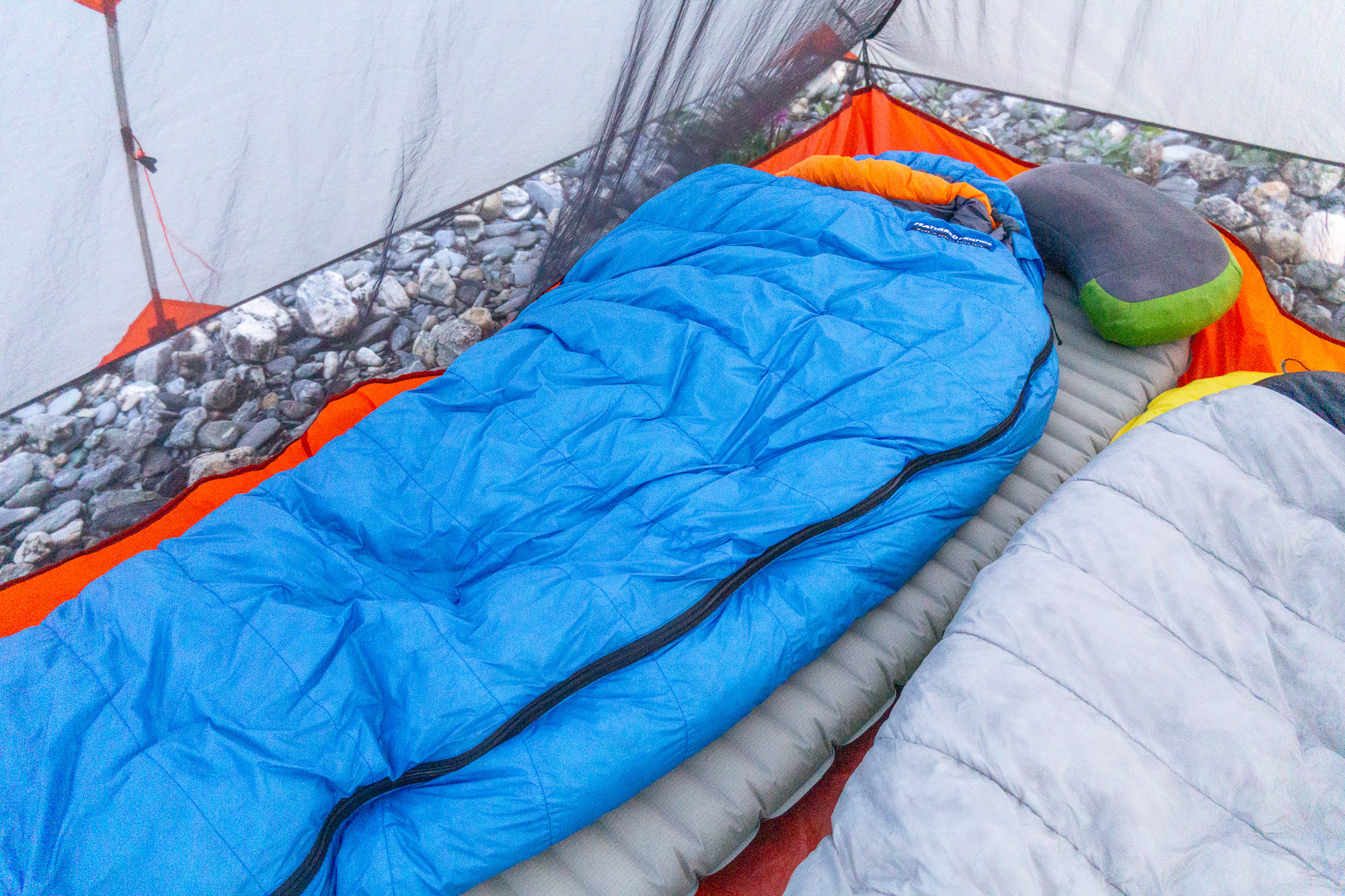
Do something well enough, long enough, and you’ll be known for it. Feathered Friends, a Seattle brand that has been churning out high-alpine down sleeping bags and outerwear since 1972, has earned a rep for bags true to its rating. After sleeping in the bag down to 32 degrees with warmth to spare, I’d reckon that’s an accurate assessment.
When temperatures dropped to around 50, I opted to unzip the bag most of the way and drape it over me like a quilt, which worked excellently as well. On middle-of-the-road nights, simply opening up the footbox a bit helped to keep me from sweating out the bag.
Other sleeping bag options I considered for my Alaska trip included the Mountain Hardwear Phantom 15 — a bag that my buddy did end up bringing along — and a not-so-sleeping bag: the Katabatic Alsek 22 Quilt, an option that I’ve tested and found warm enough even for known cold sleepers.
Compared to the Swallow UL 20, the Phantom 15 is fairly competitive. It packs in 1 pound, 4 ounces of 850-fill goose down for an average weight of 2 pounds, 1.2 ounces, compared to the Swallow’s 1 pound, 0.8 ounces of 950-fill down and 1 pound, 11.3 ounces overall weight. Having slept in both, I’d argue that the Phantom is only a smidge warmer and heavier.
The Alsek quilt, on the other hand, felt a bit cheeky to bring along, given the stakes of the trip. As a quilt, it’s not going to be as conventionally warm as a bag like the Swallow, but it is more versatile for lower-48 trips in spring through fall. Since failure wasn’t an option, going with the full-coverage Swallow made more sense for my Alaskan traverse.
No Down Water-Resistant Treatment?
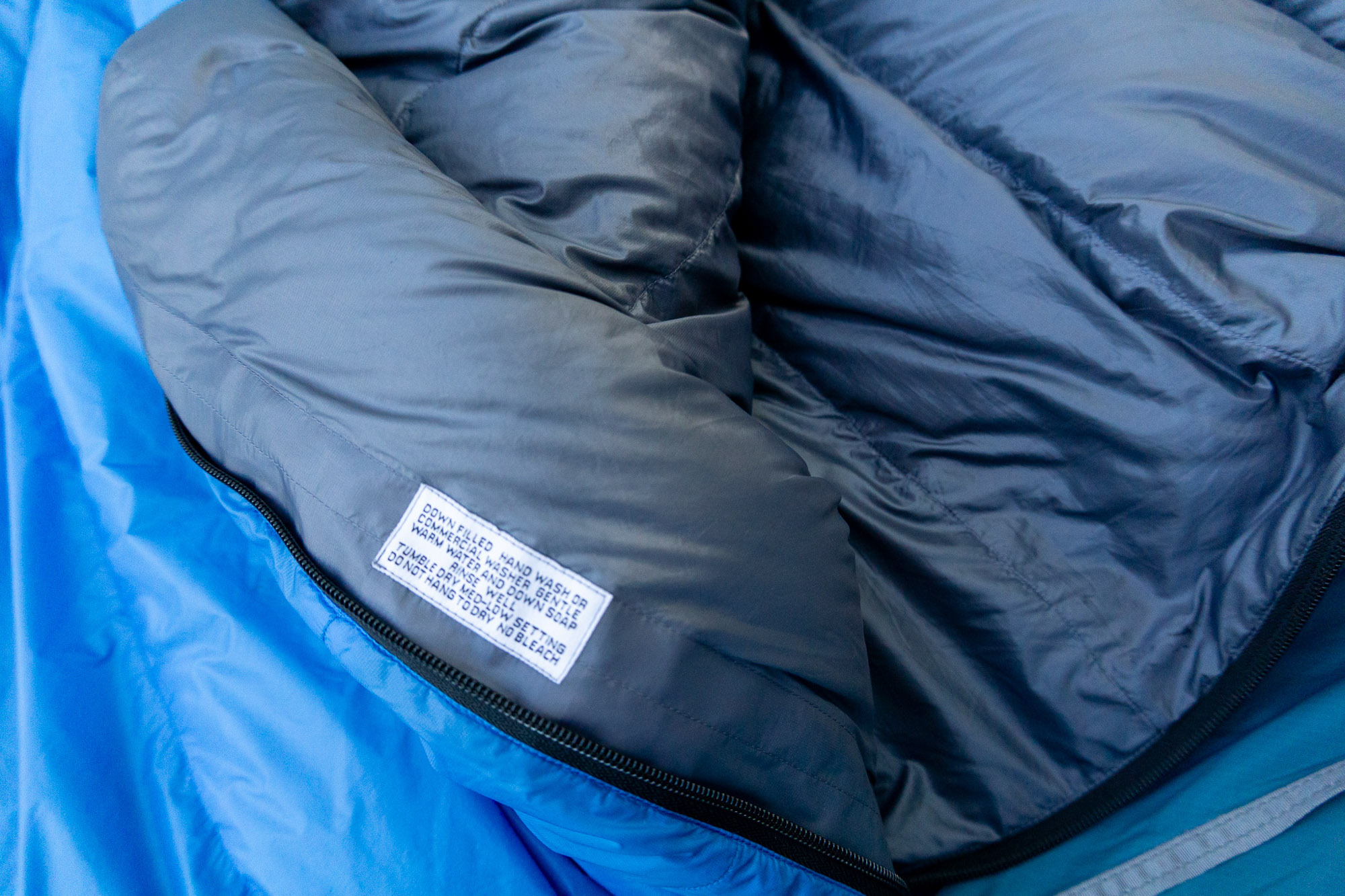
Nope — and there’s good reason, I’ve learned. Feathered Friends, in fact, doesn’t apply any water-repellant finishes to its insulation down. (Western Mountaineering is another brand that has dropped the finishes, as well.) The 950+ fill power goose down used in this bag is about as good as you’re going to find anywhere, with most other bags using a 700- or 800-fill duck down instead. Instead of treating that premium down, Feathered Friends lets it stand on its own.
The reason the brand gives is that its been unconvinced that DWR-treated down resists moisture any better than untreated down. This added step on treated down also tends to make it clump more, according to Feathered Friends, and that this can lead to cold spots forming across the bag.
In Alaska, we slept next to water almost every night (including a midnight scramble when we realized that the creek beside us was rising fast and flooding us out). On this trip, however, I didn’t experience any issues with wetting out, and the few stints of sun we got were enough to keep the bag dry for the entire eight days.
I have not done any quantitative comparisons between this nontreated down and DWR-treated down. Historically, untreated down loses a dramatic amount of loft when wet. I avoided getting this bag wet, and would advise that of anyone using it.
A Fine Fit and Finish
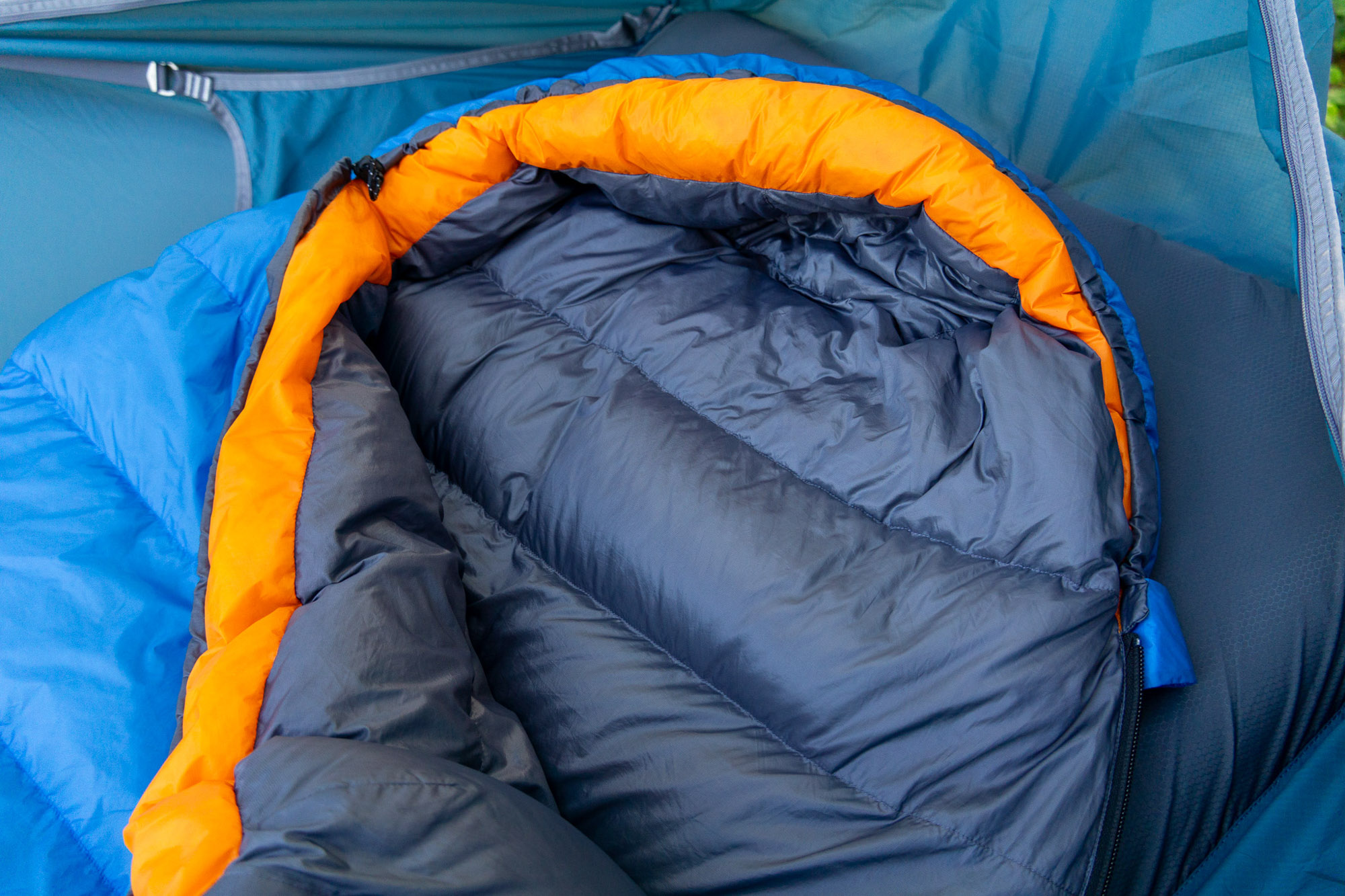
The first sign of a quality build is the name-brand fabrics used in the shell. Pertex makes some of the nicer weaves in the outdoor industry at the moment, and the Pertex Endurance 10 (Note: Now a Pertex Quantum Pro) fabric used in the bag I tested has a hardy feel in hand without going too thick and cumbersome.
Feathered Friends also hits this shell with a PFAS-free DWR finish, which worked admirably when our tarp suffered a few leaks during a heavy overnight soaking. The chunky #5 YKK zipper sports a slider hood, and along the length is a stiffened 2 inches of fabric, keeping the zipper from eating the lining textile. I’ve zipped and unzipped this bag without care for many nights now and can’t remember snagging it once.
The down collar around the neck is less filled than you might imagine, but I actually appreciated this at the 20-degree temperature rating, where I need a little venting ability more often than full-on warmth-trapping. The draft tube along the zipper, however, is ample and shuts out drafts entirely.
Room for Improvement?
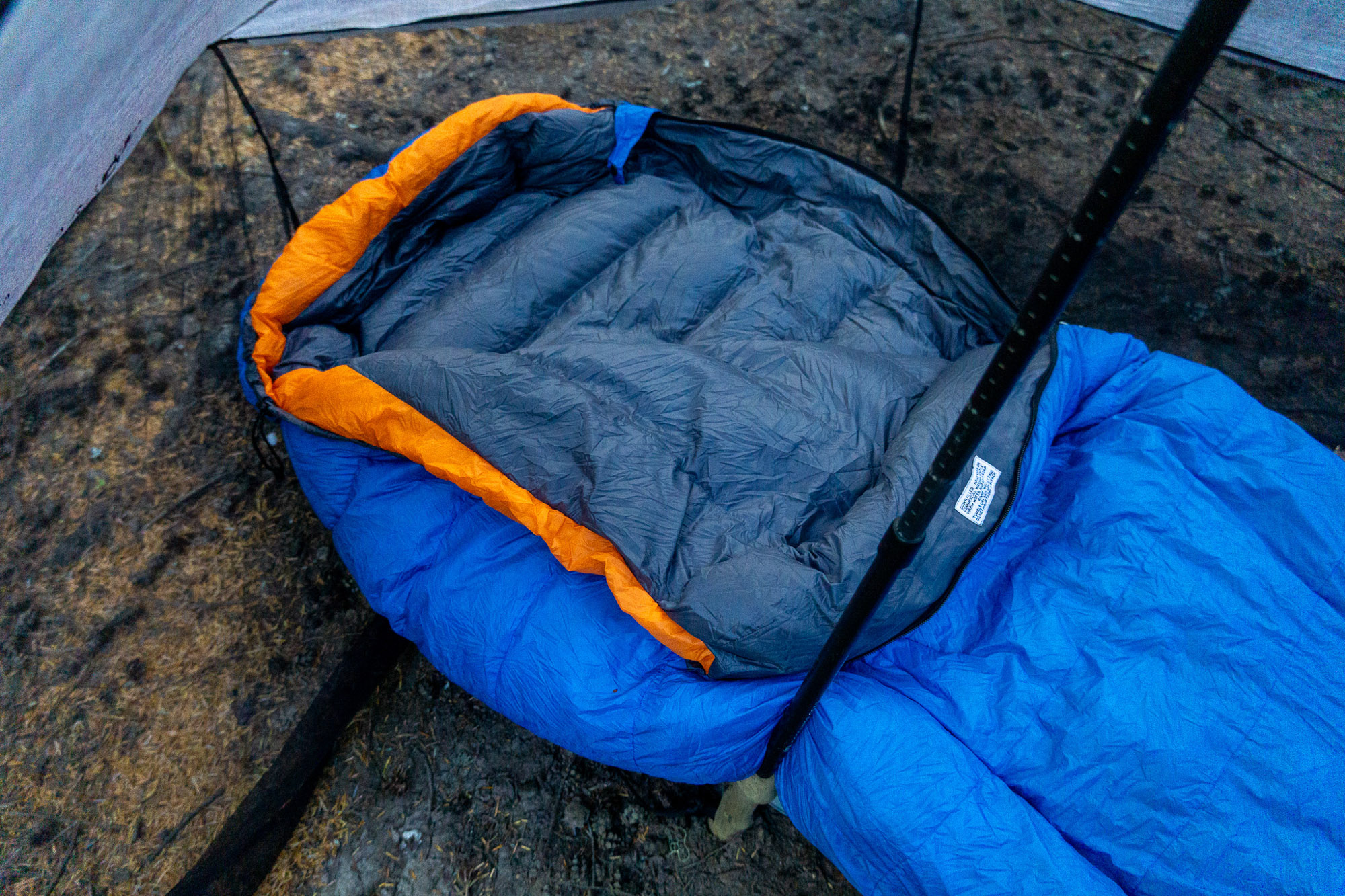
It’s tough to wrangle legitimate issues with this bag, but I’ve mounded a few up in the months I’ve used it here. For one, the small rectangle of fabric that’s used to cover the zipper near the hood isn’t the easiest to use in dim light. I’d rather this be wider and better supported along the zipper edge, in order to make snapping it closed easier.
I also wouldn’t mind a chunkier snap, such as the version used to connect the collars of the Katabatic quilts. For the money you’ll spend on the bag, I would love to have seen a compression sack with a webbing system included with the Swallow, as the simple stuff sack included is a little tough to get fully smushed down.
Finally, there is something to be said about going with a direct-to-consumer brand like Feathered Friends, namely, getting your hands on the bags before you pull the trigger and buy one. Unless you’re local to Seattle, you’ll be relying on sizing information from online. Thankfully, I’ve found it to be pretty spot on, and the brand has a solid exchange process if you land in the wrong size bag.
Who Is the Feathered Friends Swallow UL 20 For?
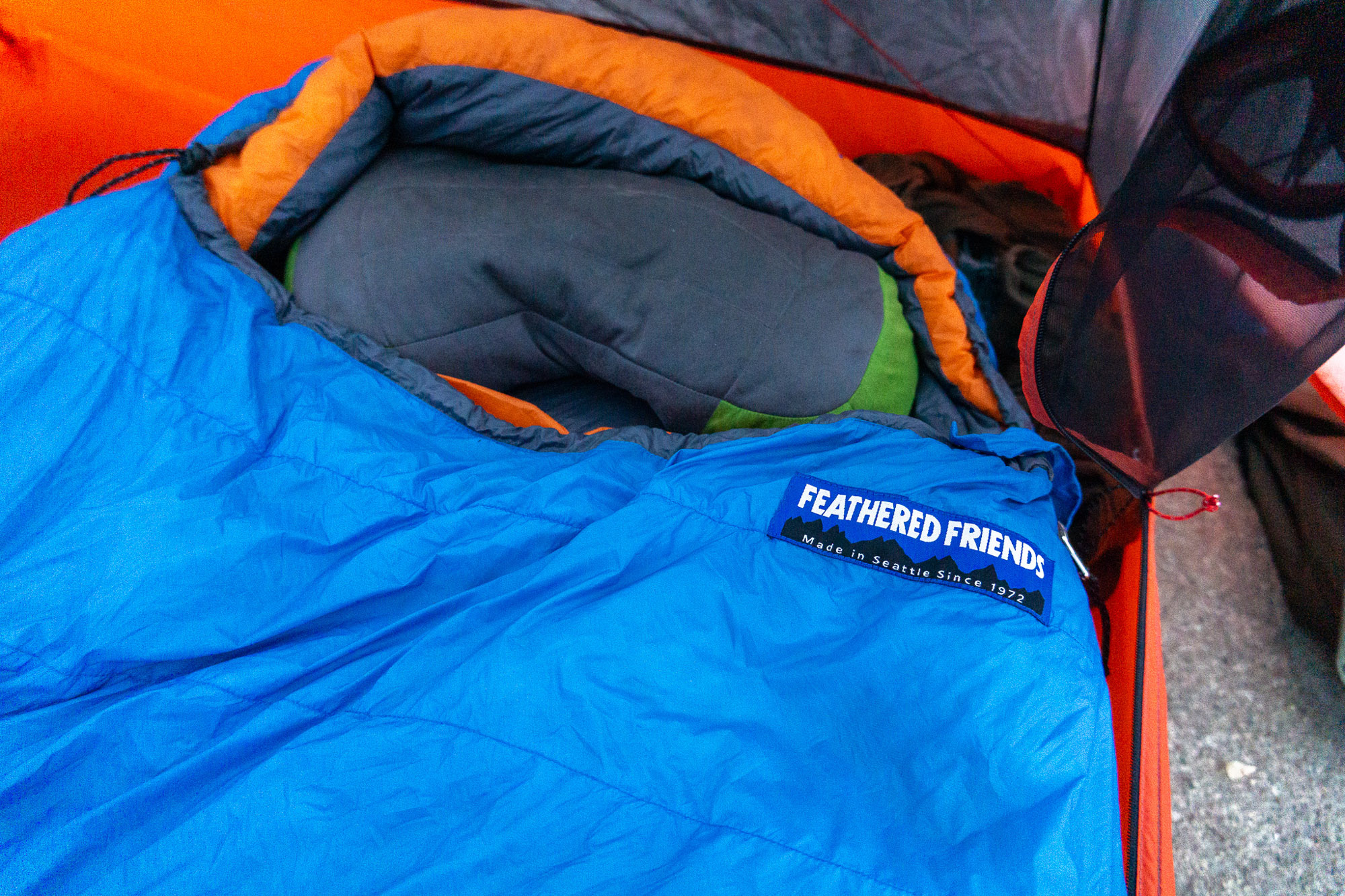
The Feathered Friends Swallow UL 20 bag is aimed at outdoors folks who know what they’re after: a 20-degree rating for three-season use, high-quality goose down that’ll stay warm after multiple seasons, and a middle-of-the-road cut that isn’t too generous or too stifling.
The Western Mountaineering UltraLite 20 is likely the closest competitor bag you’ll find, but it is a slightly trimmer bag with a narrower 39-inch footbox compared to the 42-inch space on the Swallow UL. With the new version of the Feathered Friends bag coming in at $659 for the regular size, the UltraLite does undercut it at $630.
For a little more wiggle room (and nicer 950+ fill down), I don’t think the jump to the Swallow is unwarranted for most folks. The price tag is certainly a jump up from your average, kick-around bag like a Mountain Hardwear Bishop Pass (which you can get into for a cool $285), but based on the minimal wear the bag has gathered across an entire season of use here, I think you’ll squeeze more out of the Swallow UL in the end.
Is it time to invest in a better backcountry night’s sleep? And do you need it to perform when conditions turn suboptimal? This is the bag I’m rolling with from here on out.
Read the full article here



